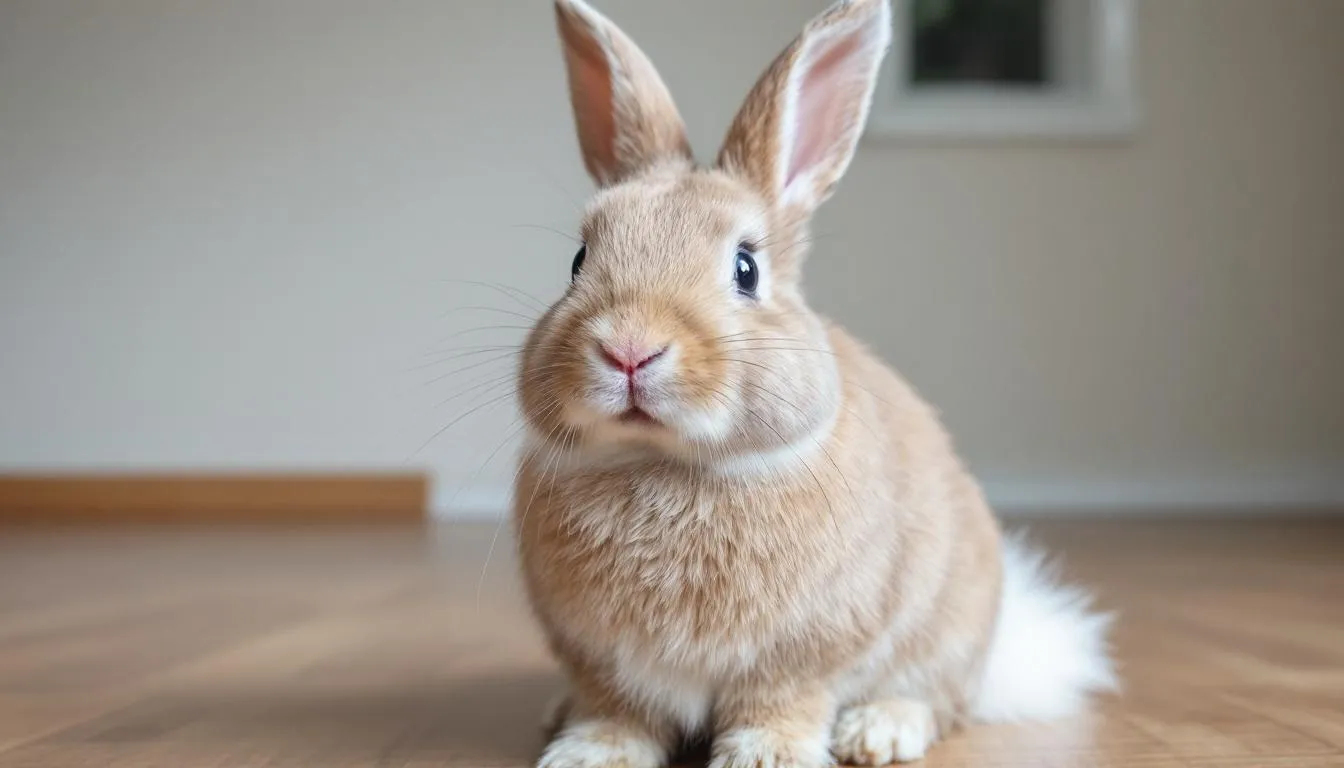Yes, rabbits do have tails – and these small but mighty appendages play a crucial role in a rabbit’s life, communication, and survival. While often overlooked due to their modest size and sometimes hidden beneath fluffy fur, rabbit tails are an essential part of these animals’ anatomy. Whether you’re a curious nature enthusiast, a pet rabbit owner, or simply someone who loves learning about animals, understanding rabbit tails offers fascinating insights into these adorable creatures.
In this article, we’ll explore everything you need to know about rabbit tails – from their appearance and functions to care requirements and fun facts that might surprise you. Let’s hop right in and discover the truth about these often-misunderstood features!
Introduction to Rabbit Tails
Rabbits indeed have tails, a distinctive anatomical feature sometimes referred to as a “scut.” This rabbit’s tail is positioned at the rear of the body and, while often overlooked due to its small size and the rabbit’s thick fur coat, it is a crucial part of both wild and domesticated rabbits’ bodies. The role of the rabbit tail extends well beyond aesthetic appeal—it’s integrally linked to the animal’s survival, communication, and physical agility.
In wild environments, the tail’s unique appearance and use have evolved in response to predation pressures, making it a point of interest for those studying animal behavior and evolutionary biology. For pet rabbit owners and enthusiasts, understanding the tail’s role can offer deeper insight into rabbit behavior, health, and the nuances of their care.
Culturally, bunny tails have become an iconic symbol, frequently referenced in media, literature, and folklore for their rounded, fluffy appearance. This image is so ingrained that many people immediately assume rabbits with their charming tails when thinking of these animals. However, beneath its cuteness lies a sophisticated adaptation with significant functions that help rabbits live and thrive in their environments.

Types of Tails in Wild and Domesticated Rabbits
Wild rabbit tails, such as those found on cottontails, are typically longer and have white undersides that serve a vital survival function. When threatened, wild rabbits will raise their tail, exposing the white underside, which acts as a visual signal to other rabbits of imminent danger while also helping to confuse predators during escape. This flash of white tail can momentarily distract predators, giving the rabbit precious extra seconds to flee and hide.
The white undersides of cottontails’ tails create a stark contrast against their brown fur, making them visible even in low light conditions. This adaptation helps rabbits communicate danger across relatively long distances, essential for prey animals that live in groups but feed individually. Unlike the white tailed deer, whose tail serves similar warning functions but is much larger, the rabbit’s tail is perfectly sized for its body and lifestyle.
Domesticated rabbits, on the other hand, can have a variety of tail types depending on their breed and genetics. Through selective breeding, humans have created rabbits with short tails, long tails, and especially fluffy tails. Some breeds, such as the Angora, have beautiful, soft fur on their tails, while others, like the Netherland Dwarf, have short, stumpy tails that are barely visible.
Rabbit tails can also vary in color and texture, with some having white tips or patches, while others are solid-colored to match their overall coat. This diversity in tail appearance demonstrates the rabbit’s adaptability and the profound impact of domestication on their physical traits. When you look at different rabbit breeds side by side, the variation in tail size, shape, and fluffiness becomes a fascinating study in genetic expression.
Functions and Characteristics
One of the primary functions of a rabbit’s tail is to help them balance while running or jumping, much like a cat uses its tail for stability. When a rabbit makes quick, sharp turns to escape a predator, the tail works in concert with the powerful hind legs and flexible spine, helping stabilize the animal during acute movements. While rabbit tails are not as long or mobile as a cat’s tail, they still provide crucial balance support during the rapid, zigzagging escape patterns that help rabbits survive in the wild.
Rabbit tails also play a crucial role in communication, with different tail positions and movements conveying various messages to other rabbits. A raised tail, especially one showing its white underside, serves as an urgent visual beacon to warn other rabbits of potential danger. This signal can help an entire group of rabbits quickly respond to threats, increasing their collective chances of survival. Young rabbits learn to recognize and respond to these tail signals very early in life, showing how essential this communication system is to rabbit society.
In the wild, rabbit tails help to warn other rabbits of potential danger and can also be used to distract predators and aid in escape. The flash of white from the underside of a tail can momentarily capture a predator’s attention, giving the rabbit a split-second advantage to change direction and escape. Predators like foxes, hawks, and cats have evolved to recognize this signal as well, which has led to an ongoing evolutionary “arms race” between prey and predator adaptations.
The tail is also an essential part of a rabbit’s body language, with different positions and movements indicating feelings such as fear, aggression, or contentment. A pet rabbit with a relaxed, neutral tail position is likely feeling calm and comfortable, while a tail held tight against the body might indicate that the animal is scared or feeling threatened. Learning to “read” your rabbit’s tail can be helpful in understanding their emotional state and responding appropriately to their needs.
For baby rabbit kits in the nest, their mother’s tail serves as a familiar landmark and source of comfort. When feeding her young, a mother rabbit will often position her tail in a way that helps shield her babies from view, offering protection from potential threats while they feed. This protective instinct shows how the tail serves multiple functions beyond the individual rabbit’s needs.

Care and Maintenance for Pet Owners
Pet owners should take care to keep their rabbit’s tail clean and free of debris, especially for breeds with long or fluffy tails. Regular grooming can help to prevent matting and tangling of the fur, which can be uncomfortable for your rabbit and potentially lead to skin problems if left unaddressed. For long-haired breeds like the Angora, daily gentle brushing of the tail area may be necessary to prevent painful knots from forming.
During grooming sessions, take the opportunity to check your rabbit’s tail for any signs of injury or infection. The skin around the tail should be clean, dry, and free from redness, swelling, or discharge. If you notice any concerning signs, it’s best to consult with a veterinarian familiar with rabbit care, as problems in this area can sometimes indicate more serious health issues that require professional attention.
It’s also important for pet owners to be aware of the potential health risks associated with rabbit tails, such as injury or infection. Rabbits can sometimes catch their tails on cage wires or other objects in their environment, leading to cuts or abrasions that may become infected if not properly treated. Ensuring your rabbit’s living space is free from sharp edges or gaps where a tail might get caught is an essential part of preventative care.
Providing a safe and comfortable environment for your pet rabbit can help to reduce stress and promote overall health and well-being. This includes making sure they have enough space to move naturally, with room to run, jump, and play without risking injury to their tail or other body parts. A stressed rabbit may exhibit unusual tail positions or movements, so paying attention to these signs can help you identify and address potential problems in your pet’s environment.
By taking proper care of their rabbit’s tail, pet owners can help to ensure their pet leads a happy and healthy life. Remember that rabbits are sensitive animals, and gentle handling is always important, especially around the tail area which contains bones that could be harmed if handled roughly. With proper attention and care, your rabbit’s tail will remain a healthy, functioning part of their body throughout their life.
Health and Hygiene
Rabbit tails can be prone to health problems, such as infection or injury, especially if they are not properly cared for. One serious condition that pet owners should be aware of is “flystrike,” where flies lay eggs in soiled fur around the tail and rear end, and the resulting larvae can cause severe damage to the rabbit’s skin. This condition can develop rapidly and be life-threatening if not addressed quickly, making regular checks of the tail area an essential part of routine care.
Pet owners should be alert for signs of illness or injury, such as redness, swelling, or discharge around the tail, and seek veterinary care if they notice any of these symptoms. A rabbit that shows signs of discomfort when their tail or hindquarters are touched may be experiencing pain that requires medical attention. Other warning signs include excessive licking or chewing at the tail area, loss of fur, or scabs on the skin.
Keeping the tail area clean and dry can help to prevent health problems, and regular grooming can also help to reduce the risk of matting and tangling. For rabbits that have difficulty grooming themselves properly—such as elderly, overweight, or disabled animals—owners may need to provide extra assistance with hygiene in the tail area. Using pet-safe wet wipes or a damp cloth to gently clean the area can be helpful, but always be sure to dry the fur thoroughly afterward to prevent skin problems.
A healthy diet and regular exercise can also help to promote overall health and well-being, including tail health. Proper nutrition supports good coat condition and helps prevent obesity, which can make it difficult for rabbits to properly groom their tail area. Exercise helps maintain mobility and flexibility, allowing rabbits to reach all parts of their body for grooming and reducing the risk of health issues related to inactivity.
Bacteria can build up in dirty, matted fur around the tail, leading to skin infections that can be painful and difficult to treat. Regular inspection of your rabbit’s tail and surrounding area allows you to catch potential problems early, before they develop into more serious conditions. By prioritizing their rabbit’s health and hygiene, pet owners can help to ensure their pet leads a long and happy life with a healthy, functional tail.

Conclusion and Final Thoughts
In conclusion, rabbit tails are a fascinating and essential part of a rabbit’s anatomy, playing a crucial role in their behavior, survival, and overall health. From the white undersides of wild rabbit tails that help confuse predators to the varied appearances of domesticated rabbit tails, these seemingly simple appendages have evolved to serve multiple important functions that help rabbits live and thrive.
By understanding the different types of tails, their functions and characteristics, and how to properly care for them, pet owners can provide better care and attention to their animals. Recognizing that a rabbit’s tail is not just a cute accessory but a vital tool for balance, communication, and expression helps us appreciate these animals on a deeper level and meet their needs more effectively.
Whether you’re observing wild rabbits in nature or caring for a pet rabbit in your house, taking the time to learn about and observe tail movements and positions can be both fun and helpful. These small signals provide valuable insights into what a rabbit is feeling and experiencing, strengthening the bond between human and animal through better understanding.
With proper care and attention, rabbits can thrive as pets, providing companionship and joy to their owners for many years. Regular grooming, health checks, and creating a safe environment all contribute to maintaining a healthy tail and, by extension, a healthy and happy rabbit. When we take the time to understand and properly care for all aspects of our pets, including seemingly minor features like their tails, we help ensure they live their best lives.
By learning more about rabbit tails and their importance, we gain a deeper appreciation for these amazing animals and the essential role each part of their body plays in their lives. From the cottontails darting through fields to the domesticated bunnies resting in our homes, rabbits and their distinctive tails continue to capture our interest and affection, reminding us of the wonder and complexity found throughout nature.



